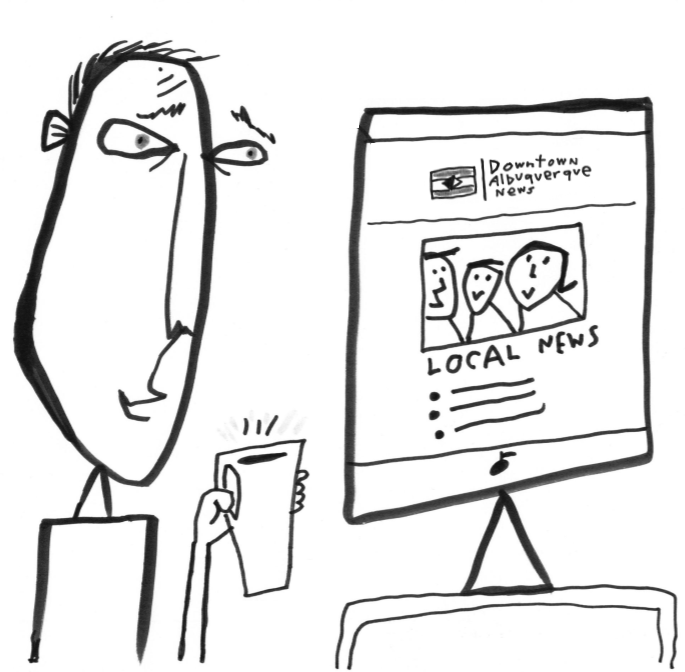
There has been much moaning and gnashing of teeth in the last 20ish years over the disturbing collapse of local newspapers as the rise of Google, Facebook, and Craigslist have replaced what was once a limited and expensive advertising market with one featuring precision targeting, cut-rate prices, and practically infinite supply.
Faced with dwindling revenue streams formerly used to finance the elaborate industrial manufacturing process that brought physical papers to doorsteps, the industry has responded with cuts, gimmicks, and denial. They even tried giving everything away for free on the internet, presumably hoping that one could hemorrhage money but somehow make it up on volume.
The results of this elaborate murder-suicide pact include the (by-now-much-ballyhooed) news deserts, where politicians and bureaucrats roam free secure in the knowledge that probing questions are not in the offing and communities that formerly had a sense of themselves are left to scratch the curiosity itch with national psychodramas and the vast wasteland that is social media.
A few idealistic startups have attempted to staunch the bleeding by building small non-profit operations, cobbling together donations and grants to hire staffers while publishing everything online, sans paywall. While certainly not hurting anything, their efforts amount to putting out a forest fire with a squirt gun: The model does not scale and offers little hope of getting us back to the pre-internet employment situation, an era when journalists were routinely sent to the lowliest of government meetings to keep an eye on things.
Against this ongoing tragedy, we had an idea so crazy we thought it just might work: Why not combine the much lower overhead that the internet age has brought to publishing with (hang on to your hats) charging a modest amount of money for exclusive access to highly relevant local news.
No gimmicks. No special events. No advertising. No fretting about grant applications. No groveling for donations. Just quality journalism, delivered by that lowest of high-tech methods: email.
The business model was tidily summed up by one subscriber this way: “For ten bucks a month you know what’s going on.”
And it’s working: Downtown Albuquerque News debuted in the summer of 2019, serves a coverage zone of about 30,000, and as of this writing counts 600 subscribers, a number that has steadily ticked up even during the pandemic. Nobody here is getting rich, but it is nonetheless a sustainable, profitable local news operation. (When was the last time you heard those words strung together?)
We’d like to believe this makes us geniuses, but rest assured it’s just a simple copy-and-paste job. Before the upheaval of the last 20 years, people routinely exchanged hard currency for local news subscriptions, and it seemed to work just fine. They were especially happy to pay for very local news about streets they drove on, schools they sent their kids to, legislation that would affect their everyday life, and restaurants they might want to check out.
That’s why DAN’s business model is the future of local news: We’ve been through some rough times of late in the newspaper business, but the same internet age that killed the advertising market reduced the cost of distribution to roughly what can be found under the average couch cushion. Meanwhile, people still want good information, and even in our coverage zone, where the poverty rate is higher than the national average, they are willing to pay for it.
The sooner the newspaper business (what’s left of it) can figure out that the solution really is that simple, the sooner those news deserts will bloom again.
